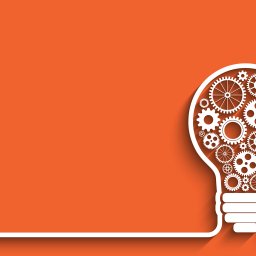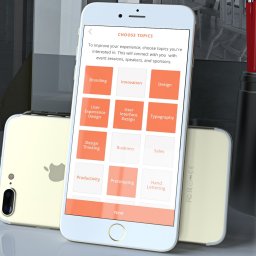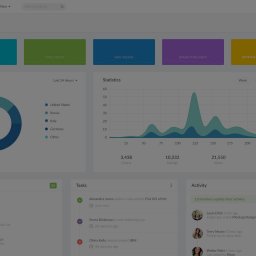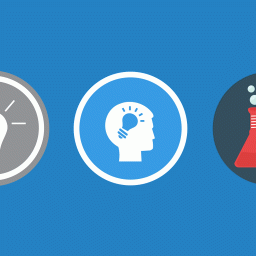By: Junaid Ali Qureshi
Any product’s decline and overnight hype or success are not predetermined. It’s critical to user experience (UX). At the point when web architecture is so smooth and natural that visitors can undoubtedly discover the data they require, it’s a win. UX is everything to a site upgrade. The nature of your substance, the magnificence of your visual communication, and the fame of an organization matters pretty much nothing if a site is awkward and difficult to explore.
Let’s take a look at ten most important aspects that designers mostly consider while designing customer friendly UX aesthetics.
1. Understand Your User
The aesthetics of your site is vital, however, abstain from picking plans in view of what looks and feels great to you. Your organization’s site isn’t for you. It’s for your buyers and sellers and the overall market. On the off chance that it doesn’t resound with the general population will’s identity coordinated there, it won’t enable you to enhance transformation and conversion rates. A poor comprehension of your audience will divert your site from a cash making venture into a deteriorating resource.
2. Accessibility
Accessibility is tied in with giving an experience which can be gotten to by clients of a full scope of capacities – this incorporates the individuals who are handicapped in some regard, for example, hearing issues, hindered vision, weakened movement or impaired learning.
Convenience design is frequently observed by digital agencies in as a misuse of cash on the grounds that the impression is that individuals with incapacities make up a little fragment of the populace. But in reality 1 of every 5 individuals in the products’ audience that will most likely be unable to utilize it if it’s not available or 20% of your aggregate market! When you plan for availability, you will regularly find that you make items that are simpler for everybody to utilize not only those with incapacities.
3. Usability
Ease of use is mainly empowering clients to adequately and productively accomplish their end objective with a product. A PC application or game which requires 3 sets of control cushions is probably not going to be usable as individuals bear 2 hands only. Items can succeed on the off chance that they are not usable but rather they are less inclined to do as such.
Poor ease of use is frequently connected with the original or first generation of any item – think of MP3 players; which lost their piece of the pie to the more usable iPod when it was introduced. The iPod wasn’t the principal MP3 player yet it was the primary genuinely usable MP3 player.
4. Desirability
Skoda and Porsche both manufacture autos. They are to some degree helpful, usable, findable, open trustworthy and profitable however Porsche is substantially more alluring than Skoda. It is not necessarily the case that Skoda is unwanted they have sold a considerable measure of autos however given a decision of another Porsche or Skoda for nothing – the vast majority will desire for the Porsche.
Appeal and desirability are passed on in plan with the help of branding, picture, character, feel and emotional outline. The more attractive an item is – the more probable it is that the client who has it will boast about it and make it desired by different users too.
Also Read: 7 Tools to Use for a Responsive Web Design
5. Imageries
Individuals simply cherish pictures. Visual representations in website architecture are an incredible method to seek traffic and to convey the idea and meaning. Around 90% of all data that we see and that gets transmitted to our brains is visual.
Around 37% surprisingly are Visual-Spatial Learners, which implies they can process data quicker if it is displayed to them graphically. Plus, pictures are an extraordinary method to seek your audiences’ attention particularly faces are extremely successful to get your guests locked in.
6. Focus On Homepage
Generally, the homepage is the principal thing individuals see when they visit your site. It is basic for your users’ prosperity that you make your homepage as significant and noteworthy as could be expected. Your audience ought to have the capacity by looking at your homepage if it’s worth to enter your site and chances are great that they will get what they are searching for.
This can be very precarious; particularly when you have distinctive target bunches with various interests and objectives. Regardless, you should offer a diagram of your main offerings or administrations. Also, enable direct access to focal product classes. Remember, that individuals don’t care to scroll. Keep all major info and call-to-activities over the overlap.
7. SEO Success
Search engine optimization isn’t an idea in retrospect for a site. Another or revamped site depends on SEO to reach customers. Begin pondering Google calculations and industry projections as well to guarantee your site is centered on rewarded strategies and not old SEO hones.
This tip accompanies a proviso. While SEO is essential, you can’t base your website architecture only on SEO. Include it, however, don’t over think it. Rather than taking a shot at particular strategies that may be compensated via search engines, most specialists prescribe that content creation concentrate more on an incentive for buyers and a consistent UX.
8. Responsive Design
You can shun huge numbers of the present patterns in web aesthetic design, however not availability. Any site constructed or modified today should incorporate responsive plan. Clients are taking a gander at organization data at work wherever they are. It isn’t necessary that a PC is always at hand, people then use their smartphones for accessing the websites.
They anticipate that that data will be promptly accessible on whatever gadget they choose. As products become more available on the internet, responsive design will enable agencies to help their experience with any new gadget. The UX on these gadgets may even be more vital than the workplace PC encounter.
9. Credibility
Users now wouldn’t give you another opportunity to trick them – there are a lot of alternatives in almost every field for them to pick a reliable supplier. Validity identifies the capacity of the client to believe in the offerings that you’ve given.
Not only that, it does the activity that it will keep going for a long period of time and that the data given is precise and relevant. It is almost difficult to convey a user experience if the client thinks the design or content creator is a lying, jokester with expectations with horrible credibility – they’ll shift their business somewhere else.
10. Never Cease To Grow
It’s Not Over When It’s Over. A genuinely great UX is one that progresses finely time to time. It turns out to be better each time you stack it – speedier, more natural, and more applicable. When you dispatch your recently planned site, that minute is the start. If you hope that your site will convey enough ROI, you’ll need to make changes and updates to react to client engagement (or scarcity in that department).
What you initially thought would work better might not significantly affect UX, and there will probably be some surprises. Consider your lunch as the beginning stage for a long haul ROI step, and pick a site development and design group you can envision yourself working with later on. In reality, website redesign is something beyond changing a couple of shades!
About Author: Junaid Ali Qureshi is a digital marketing specialist who has helped several businesses gain traffic, outperform the competition and generate profitable leads. His current ventures include Elephantation, eLabelz, Smart Leads.ae, Progos Tech and eCig.














